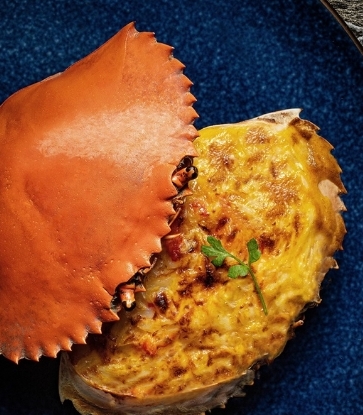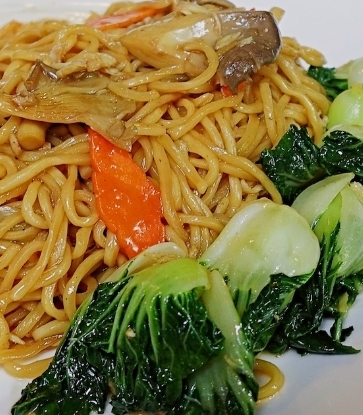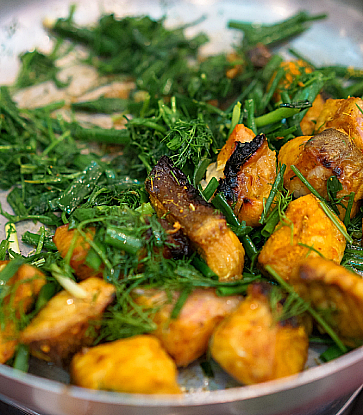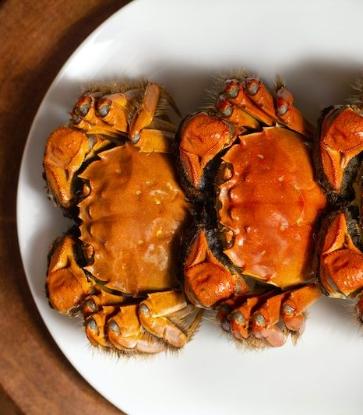It was during this time that his dream to become a chef began. With this, he decided to perfect his cooking skills. Realising that a key criteria to be a chef was to master the procedures and pace of serving dishes, he joined Aberdeen Hoi Wong Chinese Restaurant as a checker, and was responsible for putting in orders and garnishing.
To date, Lau has worked in Chinese restaurants in Peru and Madagascar, as well as helming the kitchen as Chinese executive chef in The Excelsior, Hong Kong and Spring Moon at The Peninsula Hong Kong. He joined The Ritz-Carlton, Hong Kong, and took the helm of Tin Lung Heen as the Chef de Cuisine in 2011. We speak to him to find out more.

My cooking style can be summarised in three elements: the best ingredients, the most traditional cooking method, and modern yet simple presentation.
How do you look for inspiration?
I am not really looking for inspiration. Instead, I believe that experience will become intuition, and this intuition always tells me how to bring out the best of the ingredients.
What is your biggest sense of achievement to date?
One of my biggest successes is becoming part of the culinary world. In addition, even though I set high standards for myself, it may not be easy to impose the same standards on my team members. Therefore, being able to lead a team where every member is striving for the same goal, which is to uphold the highest standards of Cantonese cuisine, is another one of my biggest successes.

My boss once told me, “You are most useless, but you are earning the highest salary”. His words were imprinted in my heart. I knew my boss was only trying to push me harder so I can improve faster. Back in the day, he asked me to stir-fry three pieces of choy sum, three slices of tomato, four slices of mushroom and four pieces of celery, and then put the dish in the fridge. I would only pass the test if the texture, flavor and ‘wok hei’ of the dish were maintained after two days. This training helped me unveil my potential.
What is the foundation of Cantonese food?
The authenticity of Cantonese dishes, the balance of flavours, as well as the unique taste of ‘wok hei’ are of utmost importance. Traditional Chinese sauces like soy sauce, oyster sauce, fermented bean curd, fermented red bean curd and chili bean sauce are essences of Cantonese cuisine as well.
What is your favourite ingredient?
My favourite ingredients are seafood and mushroom. Cantonese cuisine is all about diverse ingredients, cooking methods and flavours, as well as striking a balance between meat and vegetables. Seafood and mushrooms are versatile ingredients that can help create quality Cantonese dishes.

Barbecued Iberian pork with honey: I use Spanish Iberian pork because of its tenderness, as well as its nutty flavours and floral aroma. Only use pork shoulder to make the dish, due to its tenderness and the ideal fat-meat balance. The pork is first roasted at low temperature to retain the tenderness of the pork. Right before serving the dish, the pork is roasted again at high temperature to caramelise the honey and sugar. When the dish is served, the Barbecued Iberian Pork is served in slices in order to maintain the tenderness.
Steamed crab claw with egg white in Hua Diao wine: By extracting the flesh freshly out of the huge Vietnam mud crab, the firmness and sweetness can be retained. I first steam the egg white and crab claw at low temperature, followed by adding Hau Diao sauce to enrich the flavour profile of the dish. The egg white that absorbs the sweetness of the crab and aroma of Hua Diao wine is indeed the essence of the dish.
Double-boiled chicken soup with fish maw in baby coconut: The chicken stock is first simmered for two hours. After removing the excess oil, it is simmered again for another hour with coconut water, which adds sweetness and freshness to the soup. The meaty and flavorful yellow croaker fish maw is rich in collagen, which is definitely the ladies’ all-time favorite.

I think I was cooking at that time. When I got the news, I immediately reminded my team not to be complacent, but to be even more alert. This was because more and more guests would come because of our reputation. We had to be alert and keep up our standards because we could not afford to disappoint our guests.
What about when the restaurant received two stars in 2012?
My thoughts are still the same as when our restaurant earned its first Michelin star. Just keep up the standards, and never disappoint our guests.
What do you think are some challenges faced when cooking Cantonese cuisine today?
To minimise labor costs, many restaurants hire fewer employees. Many production processes become outsourced, like pastries, dim sum, sauce, barbecued items, etc. Dishes from different restaurants become standardised and lack their own characteristics. On the other hand, restaurateurs should not adjust food quality according to the food cost. This would damage the reputation of Cantonese cuisine.
Any advice for young chefs?
Do not only focus on your smartphone. Instead, put more effort on polishing your skills. Try to learn and absorb everything as fast as possible. Do not judge a job by its salary, since what you learn from the job will always be rewarding.























